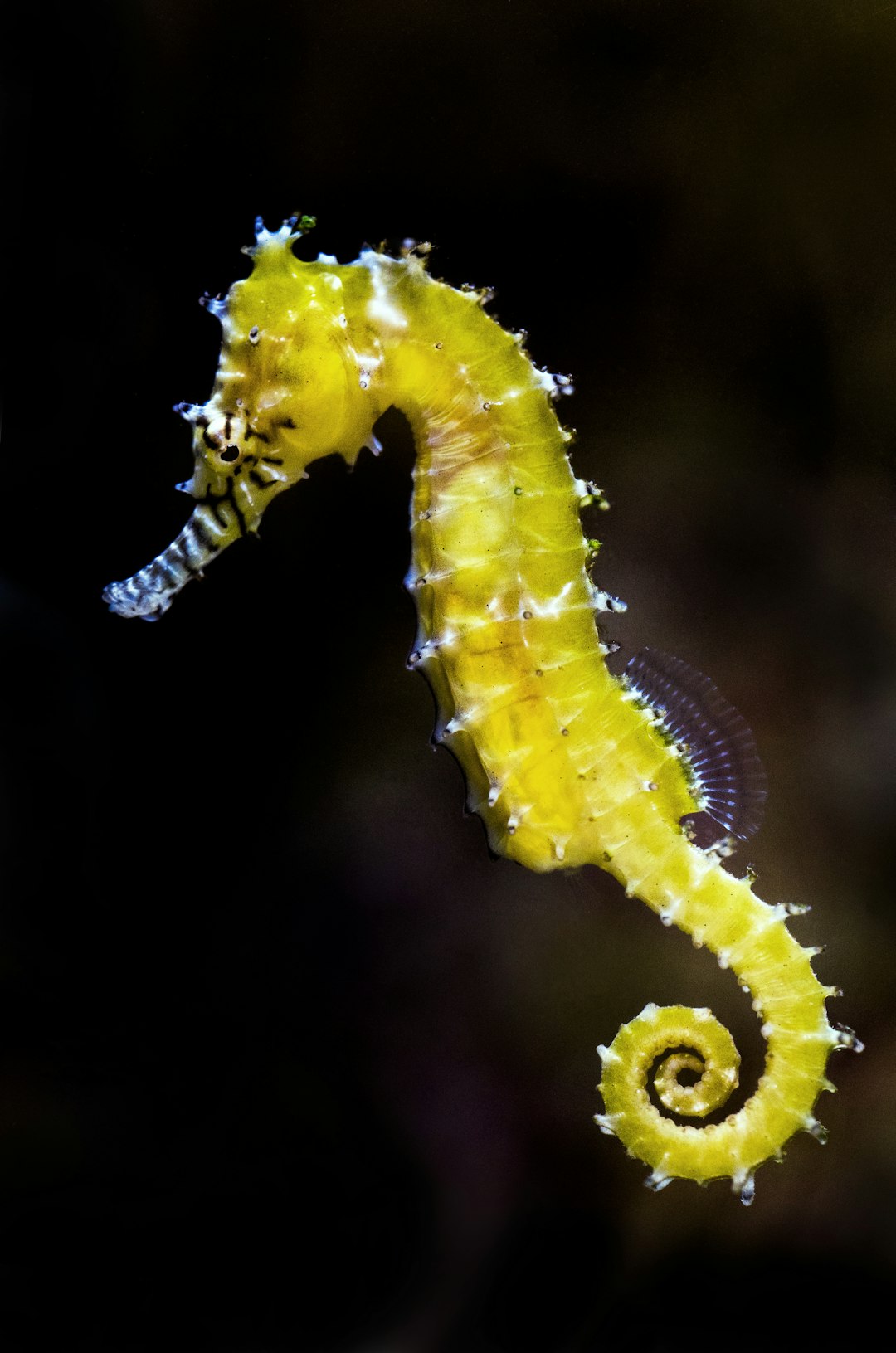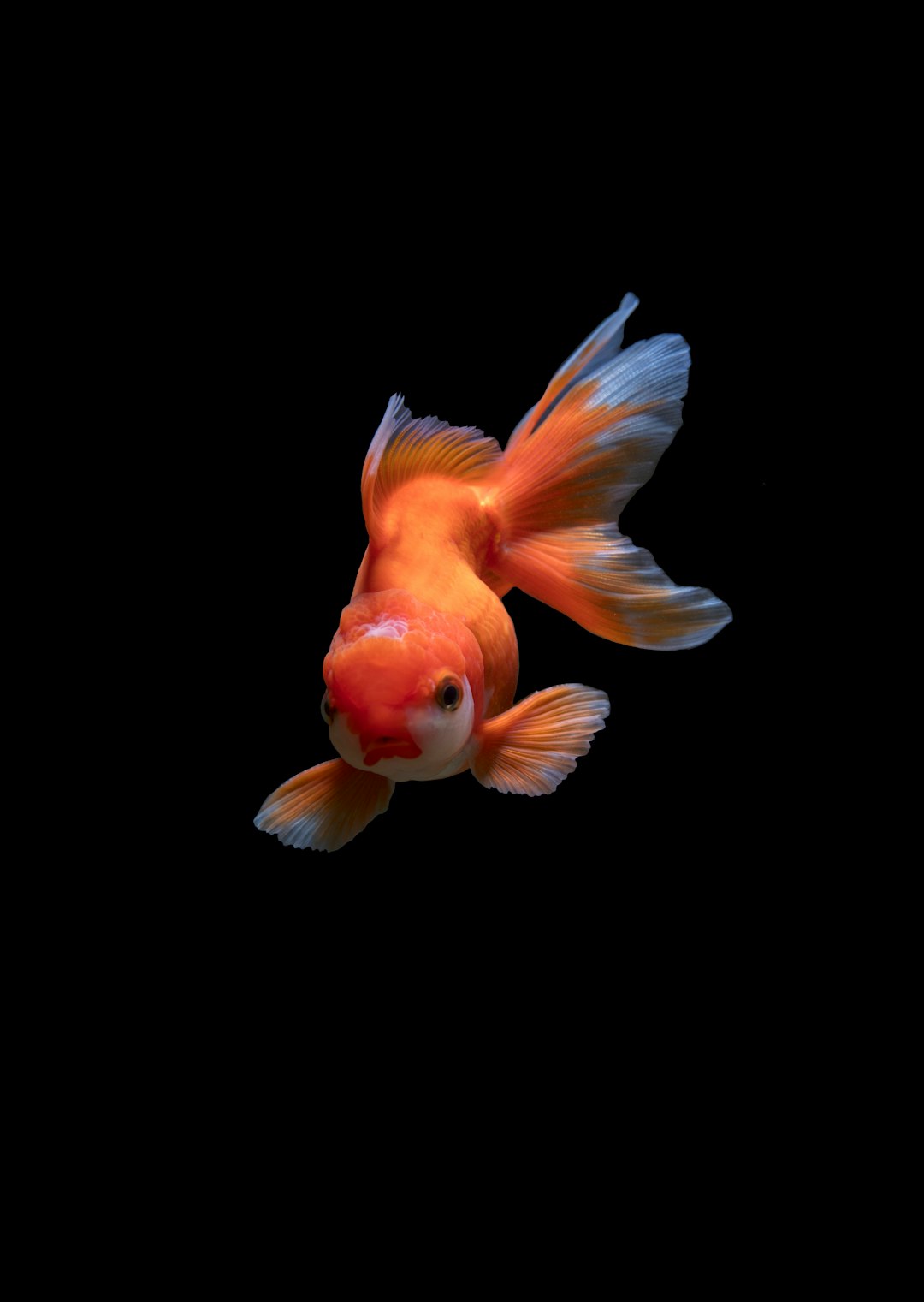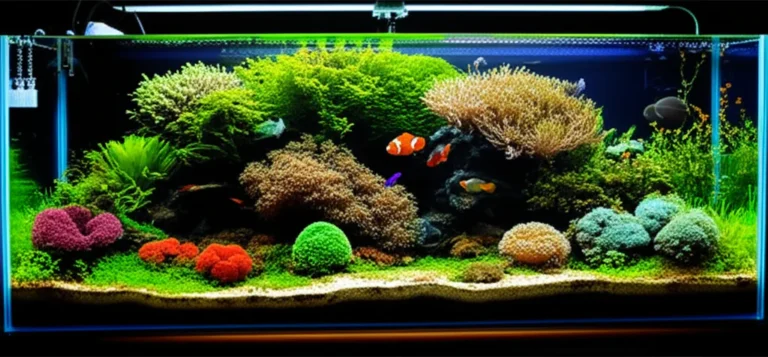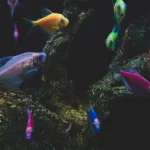Support our educational content for free when you purchase through links on our site. Learn more
What Is the Ideal Fish Tank Size for Your Space? 10 Expert Tips 🐠 (2025)
Ever stared at that empty corner in your living room wondering, “What size fish tank would actually fit here without turning my space into a soggy disaster zone?” You’re not alone! At Aquarium Music™, we’ve helped countless aquarists—from first-timers to seasoned pros—navigate the tricky waters of tank sizing. Spoiler alert: the “bigger is better” mantra isn’t always the answer. In fact, picking the perfect tank size is like composing a symphony where every note (or gallon) counts.
Did you know that a tank too small can cause stress and health issues for your fish, while a tank too large might overwhelm your space and budget? Stick around as we dive into 7 essential factors, real aquarist stories, and pro tips to help you find your tank’s sweet spot—whether you’re dreaming of a nano planted paradise or a sprawling aquatic kingdom.
Key Takeaways
- Measure your space carefully before choosing a tank to avoid costly mistakes.
- Match tank size to fish species and population for a healthy, thriving aquarium.
- Consider maintenance and equipment needs; bigger tanks aren’t always easier.
- Planted aquariums need specific size and depth considerations for optimal growth.
- Popular tank sizes range from nano (under 10 gallons) to large (50+ gallons), each with pros and cons.
- Real stories show how upgrading or downsizing tanks can transform your fishkeeping experience.
Ready to find your perfect tank? Explore top brands like Fluval, Aqueon, and Current USA to get started!
Table of Contents
- ⚡️ Quick Tips and Facts About Fish Tank Sizes
- 🌊 The Evolution of Aquarium Sizes: A Brief Dive into History and Trends
- 📏 How to Measure Your Space for the Ideal Fish Tank Size
- 🐠 7 Essential Factors to Consider When Choosing Your Aquarium Size
- 🎯 Matching Fish Species to Tank Size: What Works Best?
- 🌿 Planted Aquariums & Aquascaping Lovers | Finding the Perfect Tank Size for Your Green Oasis
- 🏠 Aquarium Placement Tips: Making the Most of Your Space Without Compromise
- 💡 Lighting, Filtration, and Maintenance Considerations Based on Tank Size
- 📦 Popular Fish Tank Sizes and Their Pros & Cons: From Nano to Giant
- 🔧 DIY vs. Pre-Made Tanks: Which Size Options Are Best for You?
- 💬 Real Aquarist Stories: How Tank Size Transformed Our Fishkeeping Experience
- 🛒 Recommended Brands and Models for Every Space and Budget
- 🧠 Troubleshooting Common Tank Size Mistakes and How to Avoid Them
- 🎉 Conclusion: Finding Your Fish Tank’s Sweet Spot
- 🔗 Recommended Links for Further Exploration
- ❓ FAQ: Your Burning Questions About Fish Tank Sizes Answered
- 📚 Reference Links and Resources
Quick Tips and Facts About Fish Tank Sizes
To get started with your aquarium journey, it’s essential to understand the basics of fish tank sizes. Check out our article on fish tank to learn more about the different types of tanks and their characteristics. Here are some quick tips and facts to consider:
- Tank size: The size of your tank will depend on the type of fish you want to keep, the space available, and your budget.
- Fish species: Different fish species have different space requirements. Research the specific needs of your fish to ensure you provide them with a suitable environment.
- Aquarium maintenance: Regular maintenance is crucial to keep your tank clean and healthy. This includes water changes, cleaning the gravel, and monitoring water parameters.
Factors Affecting Tank Size
When choosing a tank size, consider the following factors:
- Space constraints: Measure the area where you plan to place the tank to ensure it fits comfortably.
- Fish population: The number and size of fish you want to keep will impact the tank size.
- Equipment and accessories: Consider the space required for filters, heaters, and other equipment.
The Evolution of Aquarium Sizes: A Brief Dive into History and Trends

The history of aquariums dates back to the 19th century, with the first aquariums being small, simple containers. Over time, aquariums have evolved to become more sophisticated and diverse. Today, there are various tank sizes and styles available, from small nano tanks to large custom aquariums.
For more information on fish care and species profiles, visit our category page at https://www.aquariummusic.com/category/fish-care-species-profiles/.
How to Measure Your Space for the Ideal Fish Tank Size
Measuring your space is crucial to determine the ideal tank size. Here’s a step-by-step guide:
- Measure the length and width: Use a tape measure to record the length and width of the area where you plan to place the tank.
- Consider the height: Take into account the height of the space, including any obstructions, such as shelves or windows.
- Check the weight limit: Ensure the floor or surface can support the weight of the tank and its contents.
7 Essential Factors to Consider When Choosing Your Aquarium Size
When selecting a tank size, consider the following essential factors:
- Fish species and population: Research the specific needs of your fish, including their adult size, swimming level, and social requirements.
- Space constraints: Ensure the tank fits comfortably in the designated area.
- Budget: Consider the cost of the tank, equipment, and maintenance.
- Equipment and accessories: Choose a tank that can accommodate the necessary equipment, such as filters and heaters.
- Maintenance and upkeep: Consider the time and effort required for regular maintenance.
- Aesthetics: Select a tank that fits your desired style and decor.
- Future plans: Think about your long-term goals, such as upgrading to a larger tank or adding more fish.
Matching Fish Species to Tank Size: What Works Best?
Matching fish species to tank size is crucial for a healthy and thriving aquarium. Here are some general guidelines:
- Small fish (less than 1 inch): 5-10 gallons per fish
- Medium fish (1-2 inches): 10-20 gallons per fish
- Large fish (2-3 inches): 20-30 gallons per fish
- Extra-large fish (over 3 inches): 30-50 gallons per fish
For more information on fish and aquatic life, visit our category page at https://www.aquariummusic.com/category/fish-aquatic-life/.
Planted Aquariums & Aquascaping Lovers | Finding the Perfect Tank Size for Your Green Oasis
Planted aquariums and aquascaping require careful consideration of tank size to create a thriving ecosystem. Here are some tips:
- Choose a tank with a suitable depth: Plants require adequate lighting, so a deeper tank can provide better growth.
- Consider the plant species: Research the specific needs of your plants, including their growth rate and lighting requirements.
- Leave space for decoration: Aquascaping requires creative arrangement of rocks, driftwood, and other decorations.
For more information on aquascaping and aquatic plants, visit our category page at https://www.aquariummusic.com/category/aquascaping-aquatic-plants/.
Aquarium Placement Tips: Making the Most of Your Space Without Compromise
When placing your aquarium, consider the following tips:
- Avoid direct sunlight: Direct sunlight can cause algae growth and temperature fluctuations.
- Keep away from drafts: Drafts can cause temperature fluctuations and stress to your fish.
- Choose a stable surface: Ensure the surface is level and can support the weight of the tank.
Lighting, Filtration, and Maintenance Considerations Based on Tank Size
Different tank sizes require different lighting, filtration, and maintenance considerations. Here are some general guidelines:
- Small tanks (less than 20 gallons): Use a hang-on-back filter and a low-wattage light.
- Medium tanks (20-50 gallons): Use a canister filter and a medium-wattage light.
- Large tanks (over 50 gallons): Use a high-quality canister filter and a high-wattage light.
Popular Fish Tank Sizes and Their Pros & Cons: From Nano to Giant
Here are some popular fish tank sizes and their pros and cons:
- Nano tanks (less than 10 gallons): Pros: space-saving, low maintenance. Cons: limited fish selection, unstable water parameters.
- Small tanks (10-20 gallons): Pros: affordable, easy to maintain. Cons: limited fish selection, may require more frequent water changes.
- Medium tanks (20-50 gallons): Pros: stable water parameters, variety of fish selection. Cons: requires more space, higher maintenance costs.
- Large tanks (over 50 gallons): Pros: stable water parameters, ample fish selection. Cons: requires significant space, high maintenance costs.
DIY vs. Pre-Made Tanks: Which Size Options Are Best for You?
When deciding between DIY and pre-made tanks, consider the following factors:
- Space constraints: DIY tanks can be customized to fit unique spaces.
- Budget: Pre-made tanks are often more affordable than DIY tanks.
- Maintenance: DIY tanks may require more maintenance due to custom equipment and plumbing.
Real Aquarist Stories: How Tank Size Transformed Our Fishkeeping Experience
We’ve spoken to several aquarists who have shared their experiences with different tank sizes. Here are a few stories:
- Upgrading to a larger tank: “I started with a 10-gallon tank, but soon realized I needed more space for my growing fish collection. Upgrading to a 20-gallon tank was a game-changer – my fish are happier and healthier, and I have more room for creative aquascaping.”
- Downsizing to a smaller tank: “I had a 50-gallon tank, but after moving to a smaller apartment, I had to downsize to a 10-gallon tank. It’s been a challenge, but I’ve learned to appreciate the simplicity and low maintenance of a smaller tank.”
Recommended Brands and Models for Every Space and Budget
Here are some recommended brands and models for different tank sizes and budgets:
- Nano tanks: Fluval Flex 9-Gallon Tank | Tetra 10-Gallon Tank | API 10-Gallon Tank
- Small tanks: Aqueon 20-Gallon Tank | Coralife 20-Gallon Tank | Red Sea 20-Gallon Tank
- Medium tanks: Current USA 30-Gallon Tank | EcoTech 30-Gallon Tank | Hydor 30-Gallon Tank
Troubleshooting Common Tank Size Mistakes and How to Avoid Them
Here are some common tank size mistakes and how to avoid them:
- Overcrowding: Research the specific space requirements of your fish and avoid overstocking your tank.
- Inadequate filtration: Choose a filter that is suitable for your tank size and fish population.
- Insufficient maintenance: Regularly test your water parameters and perform maintenance tasks to keep your tank healthy and thriving.
According to the Hermit Crab Association, “Please note that the above is only a guide. Every hermit crab will get along with other hermit crabs and adjust to captivity differently…It’s up to you to pay attention to all of your individual crabs needs and wants.” This quote highlights the importance of considering individual needs and circumstances when determining tank size.
Conclusion: Finding Your Fish Tank’s Sweet Spot

Choosing the ideal fish tank size for your space is like composing a symphony — every element must harmonize perfectly. From our deep dives at Aquarium Music™, we’ve seen that the right tank size depends on your available space, fish species, maintenance capacity, and aesthetic goals. Whether you’re a nano tank enthusiast or dreaming of a lush 50-gallon planted masterpiece, the key is balance.
✅ Positives of selecting the right tank size:
- Healthier, happier fish with adequate swimming room
- Easier maintenance with stable water parameters
- More creative freedom for aquascaping and decoration
- Better long-term investment and fewer surprises
❌ Negatives of choosing the wrong size:
- Overcrowding leading to stress and disease
- Frequent water quality issues in undersized tanks
- Limited fish and plant options
- Frustration from constant maintenance or lack of space
Remember the stories we shared? Upgrading or downsizing tanks can transform your experience — but starting with the right size saves you headaches and heartbreak. So measure your space carefully, research your fish and plants, and don’t be afraid to dream big (or compact)!
Ready to make waves? Dive into our recommended products below and start your aquatic symphony today!
Recommended Links for Further Exploration
👉 Shop Recommended Fish Tanks and Accessories:
-
Fluval Flex 9-Gallon Tank:
Amazon | Chewy | Fluval Official Website -
Aqueon 20-Gallon Tank:
Amazon | Petco | Aqueon Official Website -
Current USA 30-Gallon Tank:
Amazon | Bulk Reef Supply | Current USA Official Website
Recommended Books on Aquarium Setup and Care:
- The Simple Guide to Freshwater Aquariums by David E. Boruchowitz — Amazon
- Aquascaping: A Step-by-Step Guide to Planting, Styling, and Maintaining Beautiful Aquariums by George Farmer — Amazon
- The Complete Aquarium Guide by Peter W. Scott — Amazon
FAQ: Your Burning Questions About Fish Tank Sizes Answered

What are the best fish species for a small tank in a home or office setting?
Small tanks (under 10 gallons) are perfect for species like Betta fish, Neon tetras, Cherry shrimp, and Endler’s livebearers. These species thrive in limited space and are relatively low-maintenance. Avoid larger or highly active fish, as they require more swimming room and produce more waste.
Tips for small tanks:
- Keep stocking low (1 inch of fish per gallon is a rough guide)
- Focus on species with peaceful temperaments
- Maintain excellent filtration and regular water changes
How do I determine the right tank size based on the number of fish I want to keep?
Start with the “one inch of fish per gallon” rule as a baseline, but remember it’s a rough estimate. Consider fish behavior, adult size, and bioload (waste production). For example, a 3-inch goldfish needs much more space than three 1-inch neon tetras combined.
Step-by-step:
- List your fish species and their adult sizes.
- Calculate total length and adjust for species-specific needs.
- Add a buffer for growth and water quality stability.
- Choose a tank size that accommodates this comfortably.
What are the pros and cons of having a large fish tank in a residential space?
Pros:
- Stable water parameters due to larger volume
- More room for diverse fish and plants
- Impressive visual centerpiece
Cons:
- Requires significant space and sturdy furniture
- Higher initial setup and maintenance costs
- More water and electricity consumption
Can I keep a fish tank in a bedroom, and if so, what size is recommended?
Yes! Bedrooms can be great for tanks, providing calming ambiance and white noise. For bedrooms, 10 to 20 gallons is ideal — large enough to maintain stable water quality but small enough to fit comfortably.
Considerations:
- Avoid noisy filters or equipment
- Position away from direct sunlight or drafts
- Ensure easy access for maintenance without disrupting sleep
How much space do I need to leave around a fish tank for proper maintenance and filters?
Leave at least 6-12 inches of clearance behind and on the sides of the tank for equipment access and airflow. The top should be accessible for feeding and cleaning. This space also helps prevent overheating and allows you to reach hoses, filters, and cords safely.
What are the minimum tank size requirements for different types of aquatic plants and decor?
- Low-light plants (e.g., Java fern, Anubias): Can thrive in tanks as small as 5 gallons.
- High-light demanding plants (e.g., carpeting plants, stem plants): Prefer tanks 20 gallons or larger for stable lighting and CO2 distribution.
- Aquascaping with rocks and driftwood: Requires extra space to avoid overcrowding; generally 20 gallons minimum.
How do I choose the right shape and orientation of a fish tank to fit my available space?
- Long tanks offer more horizontal swimming space and are ideal for active fish.
- Tall tanks save floor space but may limit surface area, affecting oxygen exchange.
- Cube tanks provide balanced volume but can be heavier and more expensive.
Measure your space carefully and consider furniture, lighting, and viewing angles. Custom tanks or DIY options can maximize unusual spaces.
Reference Links and Resources
- Hermit Crab Association Tank Size Guidelines: http://hermitcrabassociation.com/phpBB/viewtopic.php?t=92541
- Tank Size Calculator: https://www.aquariacentral.com/forums/threads/tank-volume-calculator.190501/
- The Krib Aquarium Size Chart: http://www.thekrib.com/TankHardware/size-chart.html
- Fluval Official Website: https://fluvalaquatics.com/us/
- Aqueon Official Website: https://www.aqueon.com
- Current USA Official Website: https://current-usa.com/
- Reddit Discussion on Best Tank Size for a Single Goldfish: https://www.reddit.com/r/aquarium/comments/wgeyg7/whats_the_best_tank_size_for_a_single_goldfish/
Dive into these resources to deepen your knowledge and make your aquarium dreams a reality!







